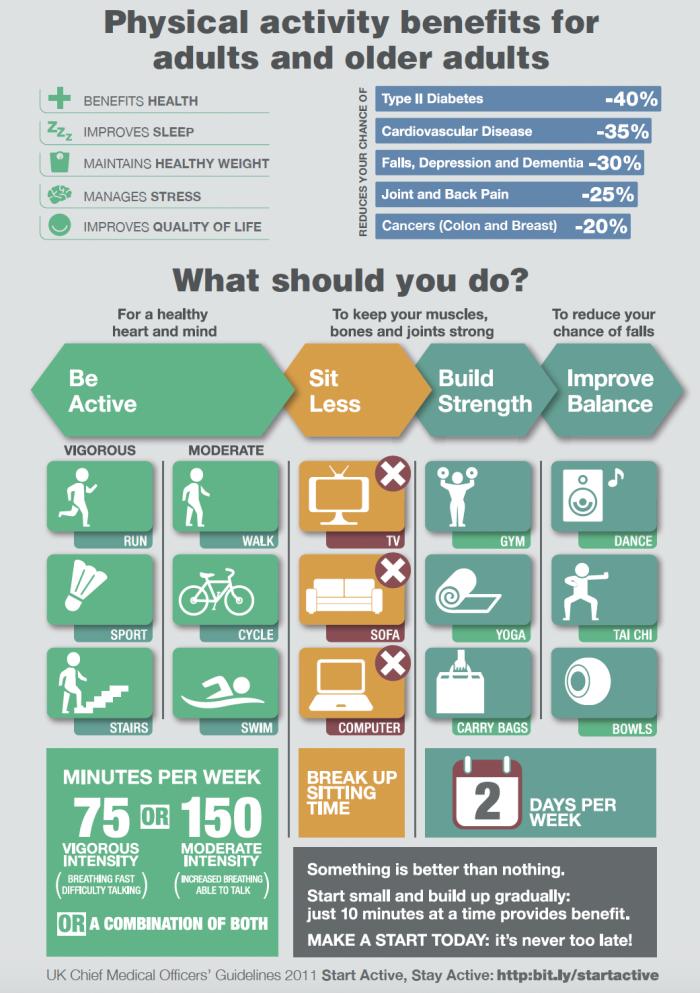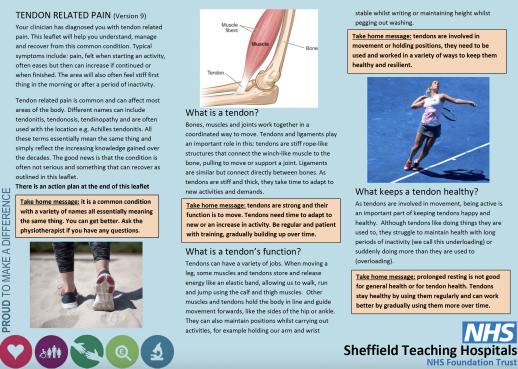Golfer’s elbow
Dealing with Golfer’s elbow
Keeping active
Prolonged rest does not help Golfer’s elbow, as too much rest can make the area less used to movement and activity, and ultimately slow recovery in the long run. Getting back to normal regular activities, even if initially sore, will significantly increase your chances of getting better even without further help and guidance.
Research shows that general exercise will improve your recovery. There is no set approach that has been shown to be the best so feel free to try different types of exercise and activity. Be guided by what you enjoy and what you feel able to start. Examples include cycling, a brisk walk or going to an aqua-aerobics class.

If you are local to Sheffield and you would like support to increase your physical activity, then you can:
- Self-refer to Move Well for personalised support and access to a wide range of physical activity opportunities, tailored to your specific needs and preferences.
- Find sport, leisure and activity groups in your local area.
- For more activity tips, visit our physical activity page under the wider health section of the website.
Simple activity modification
The tendon may be more sensitive to some positions or movements so you may wish to try modifying or pacing certain activities, for a brief period, to prevent the tendon from being unnecessarily aggravated.
- Try Relaxing your grip as much as possible when lifting or driving
- Taking short and regular breaks when undertaking activities which may be painful such as typing, lifting or repetitive manual work
Your lifestyle
A healthy body speeds up recovery. A balanced diet, regular activity, not smoking, and maintaining a healthy weight all help. Small lifestyle changes can improve recovery and reduce future pain. For more on healthy lifestyle, check out our Wider health section.
Heat or ice packs
Heat packs
A warm pack can help ease muscle tightness and pain. Use a microwaveable wheat bag or hot water bottle wrapped in a towel for 15-20 minutes, 2-3 times a day. Avoid using heat on swollen areas.
Ice packs
Ice can numb pain. Apply an ice pack (or frozen vegetables wrapped in a towel) for up to 10 minutes, 2-3 times a day.
Pain medication
Pain medication can help you stay mobile. Consult your GP or pharmacist for advice.
Your Action Plan
This tendon pain leaflet, created by specialist physiotherapists, includes an action plan which you can personalise to your own situation and needs.
Further Treatment
Physiotherapy
Not everyone needs to be seen by a physiotherapist. Some people get better on their own, usually when resting is brief, and normal use and activities are resumed. However, some people may need a more tailored programme. The evidence has shown that the best first-line management of Golfer’s elbow is physiotherapy.
Physiotherapy should include active strategies such as targeted and individualised exercises. The time of recovery will vary for each individual depending on their circumstances, but as a rough guide, it will often take at least 3-6 months of consistent rehabilitation before you start to see improvements, and 6-12 months for recovery, so be patient and work with your physiotherapist to get the most from your programme.
Steroid injections
Steroid injections have been used to treat this condition however research has shown them to be ineffective in the long term and they risk making the tissue (tendon) less healthy.
